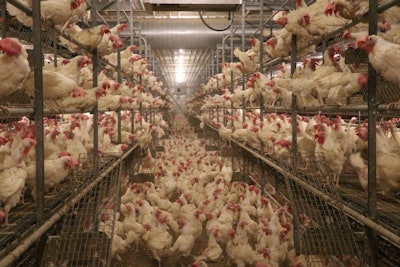
Using radiography to measure the bone quality of living hens could improve the selection of layers and transform poultry breeding, according to a recent study published in British Poultry Science.
“We’ve known from early on that there was a strong genetic component to bone quality,” Ian Dunn, personal chair of avian biology, Roslin Institute, the University of Edinburgh, said. “But the one thing that has always been a problem is finding a way of measuring it that doesn’t involve killing the chicken.”
Why bone density in laying hens matters
Laying hens are at an enhanced risk of keel bone damage, so bone quality is an important factor to consider in their genetic selection.
Keel bone damage, a deviation or fracture of a hen’s breastbone, is caused by housing design problems, genetics, behavior, rearing practices, feed and nutrition and other factors. The injury is a known challenge to raising hens in cage-free housing and occurs in an estimated 10-70% of birds on layer farms globally.
Digital x-ray imaging
The digital imaging procedure allows breeders to evaluate the bone density of potential laying hens in less than 45 seconds. In addition, the technique does not require the birds to be physically restrained or anesthetized, both of which can increase stress and impact animal welfare.
It offers a practical alternative to other imaging techniques currently in use, which include dual-energy x-ray absorptiometry, digitized fluoroscopy and CT scans.
“Genetics are really important, explaining at least 40% of the variation in bone quality,” he added. “But the truth is that poultry producers should be looking at every opportunity to improve the bone quality of laying hens.”
The project received funding for the Foundation for Food & Agriculture Research (FFAR). The agency has since announced a new funding program to support research projects dedicated to the development of scalable solutions to reduce keel bone damage in layer hens called the Layer Hen Keel Bone Health Program.

















